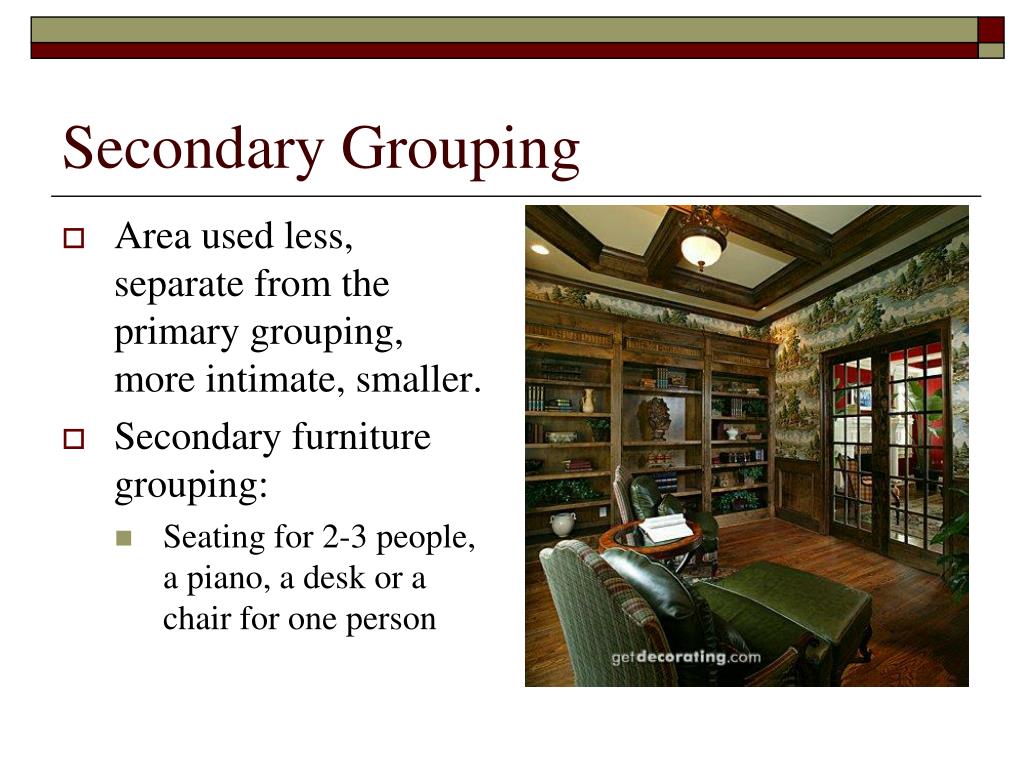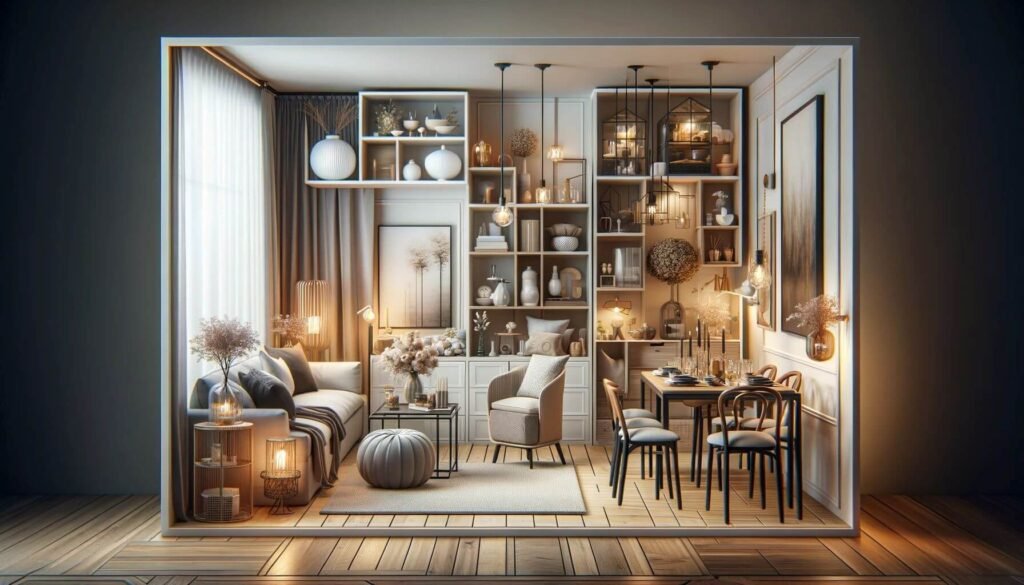As an Amazon Associate I earn from qualifying purchases.
Secondary furniture grouping is an interior design concept. It involves arranging furniture to create functional and aesthetic spaces within a room.
In interior design, secondary furniture grouping plays a vital role in enhancing the flow and usability of a space. Unlike the primary arrangement, which focuses on the main function of a room, secondary groupings cater to additional activities or focal points.
Imagine a cozy reading nook in a living room or a conversation area in a large office. These secondary arrangements can transform a space, making it more versatile and inviting. Understanding the principles behind secondary furniture grouping can help you make the most of your home or office layout. It can add layers of functionality and comfort that cater to various needs and activities.
Introduction To Secondary Furniture Grouping
Secondary furniture grouping is a key concept in home design. It involves creating smaller, functional areas within a room, apart from the main furniture setup. This article will introduce you to secondary furniture grouping.
Definition And Importance
Secondary furniture grouping refers to arranging additional furniture pieces to create a distinct area. This could be a reading nook, a conversation corner, or a small workspace. The main goal is to enhance the room’s functionality and aesthetics.
The importance of secondary furniture grouping lies in its ability to maximize space. It helps in utilizing every corner of the room effectively. It also adds depth and character to the overall design. By creating multiple functional areas, you can cater to different activities without cluttering the main space.
Benefits For Home Design
There are several benefits of incorporating secondary furniture grouping in your home design:
- Enhanced Functionality: By creating dedicated areas, you can make each part of the room serve a purpose.
- Increased Comfort: Smaller, intimate spaces within a room can offer a cozy and comfortable feel.
- Better Space Utilization: It helps in making the most out of every inch of the room.
- Improved Aesthetics: Adding secondary furniture groupings can make a room look well-thought-out and visually appealing.
For instance, in a living room, you can place a small table and two chairs by the window. This creates a secondary grouping perfect for morning coffee or evening chats.
Another example is adding a comfy chair and a lamp in a bedroom corner. This setup forms a perfect reading nook.
These small changes can significantly impact the overall look and feel of your home.
Key Principles Of Secondary Grouping
Secondary furniture grouping involves arranging furniture to create functional and visually appealing spaces. This arrangement enhances comfort and usability. Let’s explore the key principles of secondary grouping.
Balance And Symmetry
Creating balance is crucial. Balance makes a room feel stable. Symmetry is one way to achieve balance. Place similar-sized items on both sides of a focal point. Use matching furniture pieces. For example, two chairs with a table in between. This setup provides a sense of order and harmony.
Functionality And Aesthetics
Furniture must be functional. Think about how the space will be used. Place items where they are most needed. For instance, a reading nook with a lamp and a cozy chair. This setup serves a purpose and looks inviting.
Aesthetics are also important. Choose pieces that match the room’s style. Consider color, texture, and material. These elements should complement each other. A well-chosen rug can tie the group together. Good lighting enhances the overall look. Use these principles to create a cohesive and attractive space.
Choosing The Right Furniture Pieces
Choosing the right furniture pieces for secondary furniture grouping can enhance your room’s look. Secondary furniture refers to those items that support the main furniture pieces. They play a crucial role in creating a cohesive and functional space.
Types Of Secondary Furniture
Secondary furniture includes items like side tables, ottomans, and bookcases. These pieces often serve both functional and decorative purposes. Side tables can hold lamps, books, or drinks. Ottomans provide extra seating or a place to rest your feet. Bookcases offer storage and display options.
Matching Styles And Colors
Select secondary furniture that complements your main pieces. Matching styles and colors is key to a harmonious look. If your primary furniture is modern, choose sleek, minimalistic secondary items. For a traditional look, opt for classic wood pieces. Also, consider the color scheme of your room. Coordinating colors can tie everything together.

Credit: www.slideserve.com
Space Planning Techniques
Space planning is vital for creating functional and beautiful rooms. It involves arranging furniture and decor to optimize room usage. Secondary furniture grouping helps in creating cozy and efficient spaces.
Room Size And Layout
First, measure the room. Understand its dimensions and shape. This helps in planning the furniture arrangement better. Large rooms can accommodate multiple secondary furniture groupings. Small rooms need careful planning to avoid clutter.
| Room Size | Suggested Furniture Grouping |
|---|---|
| Small | Compact seating, wall-mounted shelves |
| Medium | Standard seating, coffee tables, floor lamps |
| Large | Multiple seating areas, larger tables, decorative items |
Traffic Flow Considerations
Traffic flow is how people move through a room. Ensure there is clear space to walk. Arrange secondary furniture to complement the primary setup. Avoid placing furniture in direct paths.
- Leave at least 3 feet of walking space.
- Position chairs and tables to create natural pathways.
- Ensure easy access to doors and windows.
Good traffic flow makes the room feel open and inviting.
Creating Zones With Secondary Furniture
Creating zones with secondary furniture can transform your living space. It helps in making the space more organized and functional. Secondary furniture items like side tables, ottomans, and bookshelves are key. They play a crucial role in defining different areas within a room.
Seating Areas
Secondary furniture can define seating areas effectively. Place a small table between two chairs. This creates a cozy conversation nook. An ottoman can serve as both seating and a footrest. It makes the area flexible and comfortable. Adding a rug under the seating area can further define the space.
Storage Solutions
Secondary furniture offers smart storage solutions. Use bookshelves to create a mini library. They provide storage and add a decorative touch. Storage benches are another great option. They offer seating and hidden storage in one piece. Side tables with drawers can keep small items organized. This reduces clutter and keeps the room tidy.

Credit: www.splitenz.ca
Enhancing Visual Appeal
Secondary furniture grouping can elevate the visual appeal of any room. It adds depth, balance, and a touch of sophistication. Let’s explore how to enhance your space’s visual appeal through clever use of accent pieces, textures, and patterns.
Using Accent Pieces
Accent pieces are key to secondary furniture groupings. They can be small tables, chairs, or decorative items. These pieces draw attention and create a focal point. Use them to highlight specific areas of the room.
- Small tables: Perfect for holding lamps or decorative items.
- Accent chairs: Adds extra seating and style.
- Decorative items: Vases, sculptures, and art pieces enhance the look.
Incorporating Textures And Patterns
Textures and patterns add depth and interest to your room. They can make a space feel cozy or lively. Use different materials and designs to achieve this effect.
| Material | Effect |
|---|---|
| Rugs | Add warmth and softness. |
| Pillows | Introduce color and comfort. |
| Wall art | Create visual interest. |
Mix and match textures and patterns for a balanced look. Combine soft fabrics with sleek surfaces. Pair bold patterns with subtle designs. This creates a harmonious and inviting space.
Practical Tips For Effective Grouping
Secondary furniture grouping refers to arranging smaller pieces within a room. This adds function and style to your space. These groupings often include side tables, ottomans, and small chairs. They complement the primary furniture, like sofas and beds. To create effective secondary groupings, follow these practical tips.
Proportion And Scale
Ensure the secondary pieces match the size of the main furniture. A small side table looks lost beside a large sofa. Choose pieces that fit well together. This balance creates harmony in the room. Avoid overcrowding the space with too many items. Less is more.
Using Rugs And Lighting
Rugs define the boundaries of your furniture groupings. They anchor the pieces and add warmth. Choose a rug that fits the area well. Lighting also plays a crucial role. Use lamps to highlight secondary groupings. They create cozy and inviting spots. Select lighting that complements the decor. This enhances the overall look of the room.
Common Mistakes To Avoid
When arranging secondary furniture grouping, many people make common mistakes. These errors can affect both the look and functionality of the space. Being aware of these mistakes can help you create a more appealing and practical setup.
Overcrowding The Space
One common mistake is overcrowding the space. Too much furniture can make a room feel cramped. It can also limit movement, making the area less functional. Aim for a balance between filling the space and leaving room to breathe. This creates a more open and inviting environment.
Ignoring Functionality
Ignoring functionality is another frequent error. Furniture should not only look good but also serve a purpose. Think about how you will use the space. Arrange pieces in a way that supports those activities. For example, ensure seating areas are comfortable and accessible. Prioritize pieces that add value and utility to the room.
Case Studies And Real-life Examples
Understanding secondary furniture grouping can significantly impact the look and feel of your living space. Real-life examples and case studies can help you visualize how to implement these strategies effectively. Let’s dive into some practical applications.
Small Apartment Solutions
Living in a small apartment often means making the most of every inch. In one case study, a couple transformed their tiny living room with a secondary furniture grouping. They used a small round table and two chairs to create a cozy reading nook.
This setup allowed them to separate their reading area from the main seating area. The chairs were lightweight and easy to move, making the space versatile. They could quickly shift the furniture to accommodate guests or create more room.
Open-plan Living Areas
An open-plan living area can feel overwhelming without proper furniture arrangement. In another example, a family used secondary furniture grouping to define different zones in their large living space. They placed a loveseat and a coffee table near a window to create a quiet conversation area.
By adding a small rug and a floor lamp, they made this section feel distinct from the main living area. This approach provided a sense of organization and coziness, making the open space more inviting. The family now enjoys both intimate gatherings and large parties with ease.
| Case Study | Solution | Result |
|---|---|---|
| Small Apartment | Reading Nook | Versatile Living Space |
| Open-Plan Area | Conversation Zone | Organized and Cozy |
These examples highlight the power of secondary furniture grouping in transforming different living spaces. With thoughtful arrangement, even the smallest or most open areas can become functional and inviting.

Credit: www.youtube.com
Frequently Asked Questions
What Is Secondary Furniture Grouping?
Secondary furniture grouping refers to arranging secondary furniture pieces to complement the primary furniture. It enhances functionality and aesthetics.
Why Use Secondary Furniture Grouping?
Secondary furniture grouping creates a balanced and harmonious space. It improves room flow and maximizes the use of space effectively.
How To Create Secondary Furniture Groupings?
To create secondary furniture groupings, identify secondary pieces. Arrange them around primary furniture, ensuring comfort and functionality.
What Are Examples Of Secondary Furniture?
Examples of secondary furniture include side tables, ottomans, and accent chairs. These pieces support the primary furniture.
Conclusion
Secondary furniture grouping enhances room functionality and style. It creates cozy spaces within larger areas. This arrangement boosts comfort and usability. It also adds visual interest to your home. Try it in your living room or office. Notice the difference in atmosphere and productivity.
Secondary furniture grouping is simple yet effective. It transforms spaces effortlessly. Ready to refresh your room? Start grouping your furniture today.
As an Amazon Associate, I earn from qualifying purchases.


